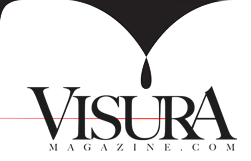
Today, women in their 30’s are the fastest growing group of people with breast cancer in the country. Although it feels like a lifetime has passed since I received treatment, I continue to be haunted by the aftermath of the surgeries, countless combinations of drugs and radical emotional upheavals. The cancer may have left my body, however, its echo never has.
At the time, I struggled as a patient with finding any cancer-ridden peer support. As a photographer, I also realized there were no photographic projects that revealed the real side of cancer, including the treatment and how it breaks a person’s body and spirit. And I needed these images. I wanted evidence of the path that I was about to face, so that I could try to prepare myself. I needed these images, in addition to the available books. Yet, there were none.
I was left searching in vain for a reflection of my experience. What I did find was a huge amount of photographs featuring women in poses of glory with half or all of their chests missing. Yes, this is a crucial part of the overall picture because it shows the triumph of the human spirit in the face of proverbial adversity, and thus should be appropriately celebrated. However, the visual void of imagery depicting the violently painful physical and emotional transformation caused by breast cancer “treatment” left me feeling alone in my sadness and sickness. Although I doubted that my photos would ever see the light of day, I felt compelled to create an archive based on my own experience to fill the distinctive missing piece in a very complicated puzzle.
So, this is how this series began. For the next 2 years, I photographed myself throughout my transformation.
I spent the night preceding my mastectomy situated in front of a camera to document the grave loss of one of my breasts, within hours of the operation. You could say that the task was partly motivated by vanity, considering that I actually liked my whole chest and wanted a recorded document of what I would never touch or see again. That being said, the act of taking a self portrait post-surgery became so much more. At this point, I had realized that this new world of physical discomfort was frightening and all encompassing; so, I wanted proof of the painful transformation, as a way of facing the reality of my cancer. If I could face its ugliness head-on, I truly believed that I might win the war against this disease. Yes, I was at war.
As we tried to excise and then kill the cancer, while cells were multiplying rapidly in my chest, I faced so many battles that challenged my daily existence with physical marathons through hell in order to become healthy again. Most days, I did not feel like I was winning, but facing the camera took me to another place. There were no oncologists, surgeons, toxic drugs or well-meaning loved ones. It was me and only me holding court in whatever phase my body had caved into at that moment. Some photographs were taken while sobbing and others with a defiant screw-you-cancer stance. I was not brave nor was I a victim, I was stubborn. I was holding my ground by simply pushing back as hard as possible in the hope that I would be the victor.
After passing into formal remission a couple of years ago, while the photographs were simultaneously being shared publicly, those moments spent alone with my camera transformed themselves into experiences that others could find some type of solace or comfort in. I am continuously awed and inspired by the people who reach out to me and give thanks for showing a direct and unapologetic view of the disease that I was lucky enough to defeat. I give thanks to all of these individual women in return. I only hope that one of my images helps a woman along her painful journey. If and when that is the case, my purpose is fulfilled.
For all, I was a survivor. I still am.
www.kerrymansfield.com





